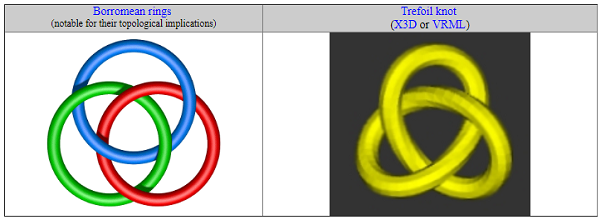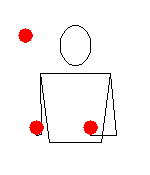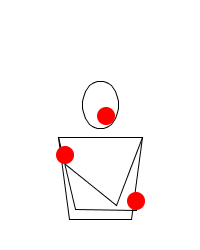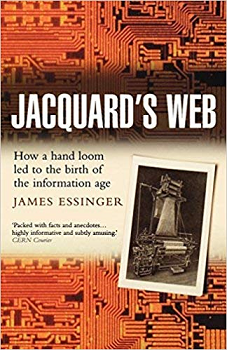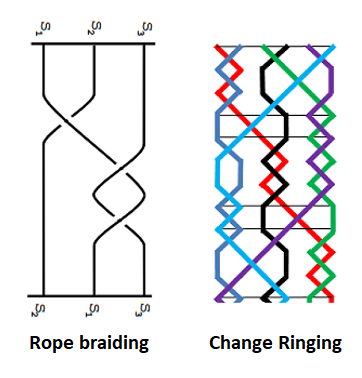Three is a general purpose interest of embodied minds
Friday, April 5th, 2019[ by Charles Cameron — threes in knotting, braiding, math and bell ringing — in service to governance, and the recognition of pattern within complexity ]
.
One is one and all alone and ever more shall be so..
Two is both duel and duet..
and three:
**
Well, those are knots, of the Celtic variety. I cam across those images because Tony Judge pointed me to the animations in a piece he’d written, Exploring Representation of the Tao in 3D: Virtual reality clues to reconciling radical differences, global and otherwise? —
which gets me thinking about thinking in threes —
— which has been an interest of mine for some time, see below —
**
And as is always the case with Judge‘s offerings, a plethora of his links called to me, and I wound up taking a look at his paper, Governance as “juggling” — Juggling as “governance”: Dynamics of braiding incommensurable insights for sustainable governance
— incommensurable insights is another topic of considerable interest to me —
— and that in turn brought me to this illustration of two instances of triple thinking about incommensurables from Australia — a triple helix and braiding:
**
Which brings us in turn to Borromean Rings and Knots:
Now the question to consider with each and all of these illustrations of threeness is whether they trigger any thoughts about the juggling and hopefully braiding and balancing of incommensurable forces in governance.. okay?
**
You’ll have noted that the braiding illustration from the Australian double illustration above is a representation of a juggling pattern. Wikimedia has dozens of such patterns with various numbers of balls, heights to which they are lobbed, &c, — and they’re fascinatingly eye-catching — mesmerizing, in fact.
Take a look at just three of them:
Selection of animations of 3-ball juggling patterns by one juggler
(derived from juggling patterns in Wikipedia)
**
I mean:
**
Wow, and okay:
Now if a pattern of juggling can be represented as a pattern of braiding, we have a comparable situation to Ada Countess of Lovelace‘s brilliant cross-disciplinary leap of insight that the logical patterns Charles Babbage used to program for his proto-computing Analytical Engine could be represented in the punched cards used by Jacquard looms in the production of patterned fabrics:
James Essinger, Jacquard’s Web
**
Am I — is Tony Judge — are we — out on a limb?
Judge offers documentation of the mathematical side of things here:
As indicated by Burkard Polster (The Mathematics of Juggling [excerpt], Monash University, 2003), the diagram above-right shows what the trajectories of juggling the basic 3-ball pattern look like (viewed from above). The three trajectories form the most basic braid. Braids are recognized as important mathematical objects. It has been shown that every braid can be juggled in that sense (Polster, 2003; Matthew Macauley, Braids and Juggling Patterns, 2003; Satyan Devadoss and John Mugno, Juggling braids and links, The Mathematical Intelligencer, 29, 2007). The implications have been further discussed separately (Potential cognitive implications of toroidal helical movement, 2016; Category juggling reframed through visualization dynamics, 2016).
And again, let’s remember Tony Judge‘s reason for his interest in juggling and braiding in the first place:
“juggling” is widely used as a metaphor to describe the challenge of responding to conflicting priorities in governance
Judge has eighteen bibliographic supports for that assertion, including:
Trump Forced to Juggle Syria Response, Rage Over Mueller Probe (WSJ, 13 April 2018) Trump juggling 75 pending lawsuits with a presidential campaign (CNBC, 27 October 2016) The art of juggling political values and Trump (WaPo, 13 April 2018)
**
Noting the correspondence between juggling — a circus-performer’s art — and braiding — not quite knitting, not quite knotting, and don’t those two words fit well together — an art associated with the decoration of hair and ribbons — I wondered whether there might not be a musical analog in counterpoint, and posted my inquiry on Twitter using this diagram of braiding:
**
I was fortunate: Change-ringing, surely very speedily responded to my inquiry:
Change-ringing, surely
The art of change-ringing in British churches and among hand-bell ringers is indeed the classic example of highly constrained and patterned musical counterpoint, so I happily Googled away in search of a change-ringing pattern comparable to my braiding patternc[left side, below], and came across the pattern [right side] in a page on the Cambridge Surprise Minor changes:
Just Knecht, too, had some interesting observations & questions..
**
Metaphor, analogy, parallelism — these are avenues into the creative process in general, and threeness analogies and metaphors interrupt our usual binary cognitive processing in a way that enhances our capacity to comprehend complexity.
I’m therefore offering this post to Ali Minai and Mike Sellers, in the hope that it will serve as a provocation to their already advanced thinking about systems dynamics. Tony Judge, obviously enough, it’s also a tribute to you…
Previous posts of mine with threeness as a topic include
Of games III: Rock, Paper, Tank Numbers by the numbers: three / pt 1 Spectacularly non-obvious, I: Elkus on strategy & games Spectacularly non-obvious, 2: threeness games Numbers by the numbers: three .. in Congress Spectacular illustration of a game of three Threeness games — some back-up materials



